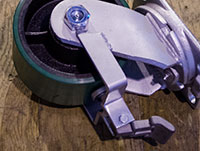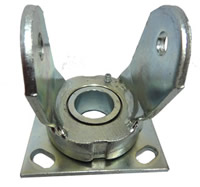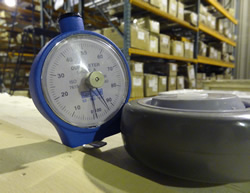Occasionally, you may find yourself in a situation where you need a replacement caster wheel. The caster fork and frame is fine, or perhaps your application doesn’t use a caster fork, and you just need a new wheel to replace an existing wheel. As long as you can remove the existing wheel, you’re in luck.
There are 4 critical measurements when it comes to replacing a wheel. These are the wheel diameter, wheel width, hub length, and bore diameter. Other dimensions will be discussed as well, but are primarily shown for clarification.
The wheel diameter is the distance measured across the side of the wheel. Occasionally the wheel will have its diameter and width stamped or molded into the wheel itself, so take minute to check and see if that is the case. If not, simply measure across the wheel. Bear in mind that wear can cause up to ½” of material loss, so if your current wheels are particularly worn you may need to round up to the nearest half inch. Because there are very standardized wheel sizes, this measurement can typically be taken with just a tape measure.
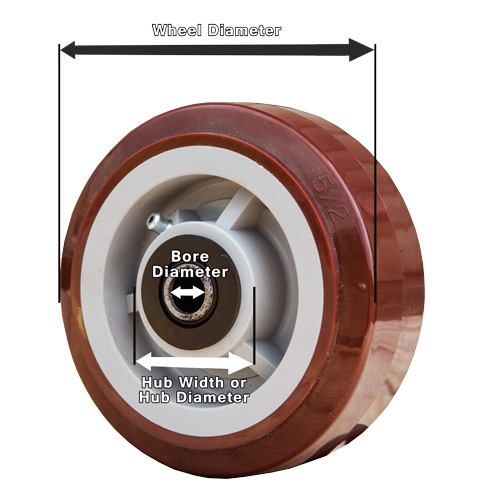 The bore diameter is the internal size of the bore. This measurement is required in order for the wheel to fit the existing axle assembly properly. While looking at the side of the wheel, measure across the inside of the opening in the center of the wheel where the axle passes through. This tends to be a more precise measurement than the wheel diameter. If you have a micrometer or caliper, that would be the preferred method of measuring. Another method would be to insert drill bits until you found one that matched the size of the bore.
The bore diameter is the internal size of the bore. This measurement is required in order for the wheel to fit the existing axle assembly properly. While looking at the side of the wheel, measure across the inside of the opening in the center of the wheel where the axle passes through. This tends to be a more precise measurement than the wheel diameter. If you have a micrometer or caliper, that would be the preferred method of measuring. Another method would be to insert drill bits until you found one that matched the size of the bore.
Wheel width is the widest part of the tread material. This measurement is not nearly as critical as the hub length, but is very helpful for locating the same or similar wheels. Generally a tape measure will suffice for this measurement.
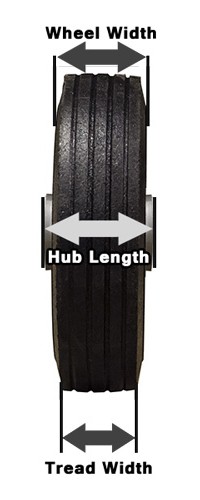
The last primary measurement is the hub length. This is the distance between each side of the wheel through the bore. Proper hub length allows the wheel to fit between the caster fork assembly with minimal play. This measurement is more important than wheel width, because it determines if the wheel will fit the frame or not. The wheel width does not determine if the wheel will fit in the fork. A tape measure will not typically fit through the bore to take this measurement. Instead, use a piece of dowel or pencil and insert it through the bore. Hold one end of the dowel flush with one side of the bore, and mark the other side. Then you can remove the dowel and measure from the flush end to the mark.
You will notice Hub Diameter and Tread Width on the images above. These are shown for reference and to reduce confusion. Note that the tread width is actually smaller in many cases than the wheel width.
With these measurements, you will be able find a replacement wheel. Remember, if you have any issues or need further assistance, we’re here to help. Give us a call at 1-800-215-8220.



